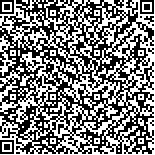孙燕,沈雅萍,钟亮,等.经皮胫神经电刺激联合电针调节骶3神经治疗对脊髓损伤逼尿肌过度活动的影响[J].中华物理医学与康复杂志,2024,46(6):539-543
扫码阅读全文

|
| 经皮胫神经电刺激联合电针调节骶3神经治疗对脊髓损伤逼尿肌过度活动的影响 |
|
| |
| DOI:10.3760/cma.j.issn.0254-1424.2024.06.010 |
| 中文关键词: 胫神经电刺激 电针 脊髓损伤 逼尿肌过度活动 尿动力学 |
| 英文关键词: Tibial nerve stimulation Electro-acupuncture Spinal cord injury Detrusor overactivity Urodynamics |
| 基金项目:浙江省医药卫生科技计划项目(2021KY1115);嘉兴市科技计划项目(2022AD30038) |
|
| 摘要点击次数: 2840 |
| 全文下载次数: 3723 |
| 中文摘要: |
| 目的 观察经皮胫神经电刺激(PTNS)联合电针调节骶3神经治疗对脊髓损伤逼尿肌过度活动的影响。 方法 选取脊髓损伤后逼尿肌过度活动患者40例,按随机数字表法分成对照组和观察组,每组20例,对照组给予常规膀胱功能训练及电针调节S3神经治疗,观察组在此基础上辅以PTNS治疗(电刺激双侧胫神经,频率10 Hz,脉宽200 μs),每日1次,每次20 min,每周治疗5 d,共治疗8周。分别于治疗前和治疗8周后(治疗后),通过尿流动力学分析仪、排尿日记(详细记录和计算患者72 h排尿情况,包括24 h总排尿次数、24 h尿失禁次数、日平均单次尿量)、尿失禁生活质量问卷(I-QOL),对2组患者治疗前后的尿流动力学、排尿情况及其生活质量进行评估。 结果 治疗后,2组患者的首次非自主逼尿肌收缩的膀胱容量(IDCV)、充盈期最大逼尿肌压(Pdet·max)、膀胱顺应性(BC)、残余尿、尿道括约肌肌电图TL值(LgTLR)均明显优于组内治疗前(P<0.05);组间比较发现,观察组治疗后的首次IDCV、BC、 LgTLR分别为(167.3±37.0)ml、(12.4±4.0)ml/cmH2O和(0.24±0.06),均明显高于对照组[(141.3±32.4)ml、(9.8±3.8)ml/cmH2O和(0.15±0.05)];而观察组治疗后的Pdet·max[(36.4±17.5)cmH2O]、残余尿[(100.5±22.2)ml]则明显低于对照组[(49.6±19.8)cmH2O和(131.3±23.4)ml],且组间差异有统计学意义(P<0.05)。治疗后,2组患者的日平均单次尿量和I-QOL评分均显著提高(P<0.05),而24 h总排尿次数和24 h尿失禁次数显著减少(P<0.05),且观察组治疗后的这些指标均显著优于对照组(P<0.05)。 结论 PTNS联合电针调节S3神经治疗可有效地抑制脊髓损伤逼尿肌过度活动,减少尿失禁。 |
| 英文摘要: |
| Objective To observe any effect of percutaneous tibial nerve stimulation (PTNS) combined with electro-acupuncture on detrusor overactivity after a spinal cord injury. Methods Forty spinal cord injury survivors with neurogenic detrusor overactivity were randomly assigned to a control group or an observation group, each of 20. Both groups received routine bladder training and electro-acupuncture modulating 3 sacral spinal nerves. The observation group also received 20 minutes of bilateral PTNS five times a week for 8 weeks. The frequency was 10Hz with a pulse width of 200μs. Before and after the treatment, both groups′ urination frequency, incontinence and average daily urine volume were assessed using a urodynamics analyzer, bladder diaries and an incontinence quality of life questionnaire (I-QOL). Results After treatment, the average involuntary detrusor contraction volume (IDCV), maximum detrusor pressure at filling time (Pdet·max), bladder compliance (BC), residual volume and the TL value of the electromyogram of the urethral sphincter (LgTLR) had all improved significantly in both groups. The 1st IDCV, BC and LgTLR of the observation group were then significantly better than in the control group, on average, with the average Pdet·max and residual volume significantly lower than in the control group. The average daily single urine output and I-QOL score of both groups had increased significantly, while the average daily urination frequency and frequency of urinary incontinence had decreased significantly. Both were again significantly better in the observation group. Conclusion Combining percutaneous electrical stimulation of the tibial nerves with electro-acupuncture can effectively inhibit detrusor overactivity after a spinal cord injury, reducing urinary incontinence. |
|
查看全文
查看/发表评论 下载PDF阅读器 |
| 关闭 |